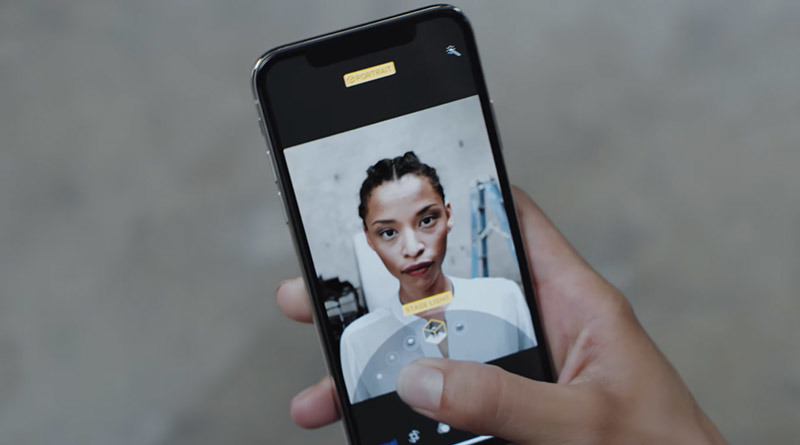Apple in a new iPhone X commercial posted to its YouTube channel on Wednesday provides a closer look at the handset's Portrait Lighting feature, showing how powerful image processing software is used to create studio quality photos without a studio.
In an ad running just under a minute and a half, Apple explains how its engineers studied various approaches to portraiture in developing Portrait Lighting on iPhone X. Apple broke down various artistic works, from paintings to pictures, to ascertain basic lighting principles that were combined to create the iOS feature.
The commercial says Apple worked with image makers and professional photographers to tweak the software, which combines traditional techniques with advanced machine learning technology to arrive at a unique artificial lighting solution.
An iPhone X ad, the commercial focuses on Portrait Lighting selfies. Apple's latest flagship includes a TrueDepth front-facing camera capable of capturing depth data alongside high-resolution 2D images. Applying knowledge gained from its art education, Apple was able to create a suite of editing tools that automatically alters a scene's perceived light, from foreground and background lighting to contours on a subject's face.
Owners of the handset can select from one of five different Portrait Lighting options: natural light, studio light, contour light, stage light and stage light mono. Each selection artificially enhances, boosts, softens, highlights or subtracts light from a selfie. Further, Portrait Lighting can be applied to any selfie captured with depth information — Portrait mode — after the fact using tools in the Photos app.
Apple's iPhone X is the only handset to offer Portrait Lighting capabilities for selfies, though both iPhone X and iPhone 8 Plus provide the software option for regular photos captured by a handset's rear-facing dual-camera array.
Apple initially detailed how it developed Portrait Lighting technology shortly after iPhone X and iPhone 8 debuted last year, saying it studied works from famous painters and photographers to realize the feature.
 AppleInsider Staff
AppleInsider Staff








 Charles Martin
Charles Martin
 Malcolm Owen
Malcolm Owen
 William Gallagher
William Gallagher

 Christine McKee
Christine McKee
 Wesley Hilliard
Wesley Hilliard

 Andrew Orr
Andrew Orr







2 Comments
This is worthy of praise. Well done, Apple.
Perhaps I'm using it wrong but I find front-facing portrait lighting to be an absolute joke compared to the rear camera. It just can't determine the borders of my face, which I find odd since it has the ability to perceive depth. Stage lighting looks like someone hastily scribbled around my head with a black paintbrush tool.